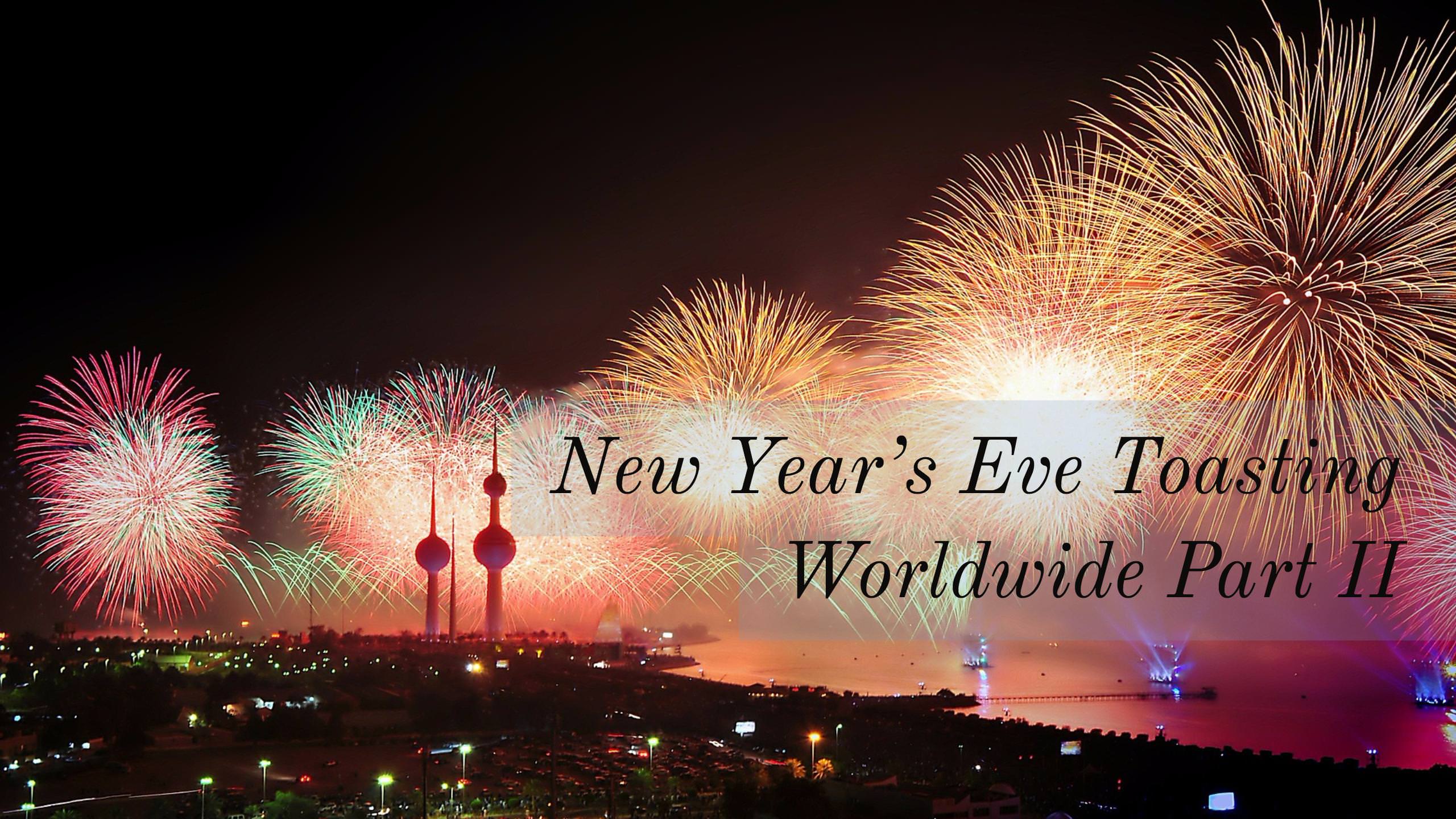Champagne was traditionally served at the coronations of French kings and has historically been associated with christenings, new beginnings, and rare moments, including New Year’s Eve festivities around the world for this reason. The art of toasting to one’s health can be attributed to the Greek culture. In Ancient Greece the hosts took the first sip of communal wine to assure their guests that the drink was not poisoned.
Ever wondered why some people clink glasses together when toasting? In early Christian times, people believed that the devil entered the body when people swallowed alcohol but could be deterred by bells chiming. To ward off the devil, guests would clink their glasses together to make a bell-like sound with every guest present. Today, modern manners do not require clinking glasses with every guest, which is cumbersome and distracting. Smiling and making eye contact is a gracious way to toast.
The word “toast” originated from the Roman practice of placing a piece of spiced, charred bread in wine to mellow the flavor. When drinking to someone’s health, the cup was always drained to reach the saturated toast at the bottom.
International New Year Toasts: Worldwide many cultures toast in one form or another. Wishing others a ‘Happy New Year’ is one of the most common toasts made on New Year’s Eve. Globally, you may hear and speak Cheers for the New Year and Congratulations for the New Year in various languages as follows:
Language – Spelling (S) or Pronunciation (P)
Afrikaans – S: Gelukkige Nuwejaar
Albanian – S: Gezuar Vitin e Ri
Azerbaijani – S: Yeni iliniz mubarek
Bahasa melayu – S: Selamat tahun baru
Basque – S: Urte berri on
Bengali – S: Shuvo Noboborsho
Bosnian – S: sretna nova godina
Catalan – S: Felic any nou
Cebuano (Philippines) – S: Mabungahong Bag-ong Tuig kaninyong tanan
Chinese – P: Chu Shen Tan
Czech – S: Stastny Novy Rok
Danish – Godt Nytar
Dutch – S: Gelukkig Nieuwjaar or Fijne oudejaarsavond
Esperanto – Bonan Novjaron
Estonian – S: Head uut aastat
Filipino – S: Manigong Bagong Taon
Finnish – S: Onnellista Uutta Vuotta
French – S: Bonne annee
Gaelic (Scotland) – S: Bliadhna mhath ur
German – S: Frohes Neues Jahr / Gutes Neues Jahr
Greek – P: kali chronya
Hawaiian – S: Hauoli Makahiki hou
Hebrew – P: Shana Tova
Hungarian – S: Boldog Uj Evet/ Buek
Indonesian (Bahasa) – Selamat Tahun Baru
Irish – S: Athbhliain faoi mhaise dhuit /Bhliain nua sasta
Italian – S: Felice Anno Nuovo or Buon anno
Japanese – P: akemashite omedetou gozaimasu
Korean – P: she heh bokmahn ee bahd euh sae yo
Laotian (Hmong) – P: nyob zoo xyoo tshiab
Latin – S: Felix sit annus novus
Maltese – S: Is Sena it-Tajba
Maori – S: Kia hari te tau hou
Nigerian (Hausa) – S: Barka da sabuwar shekara
Norwegian – S: Godt Nyttar
Polish – S: Szczesliwego Nowego Roku
Portuguese – S: Feliz Ano Novo
Romanian – S: La Multi Ani
Russian – P: s novim godom
Samoan – S: la manuia le Tausaga Fou
Spanish – S: Feliz Ano Nuevo
Swahili – S: Nakutakaia Heri Ya Mwaka Mpya
Swedish – S: Gott Nyttar
Thai – P: saa-wat-dii pi-mai
Turkish – S: Yeliniz Kutlu Olsun/ Mutlu yillar
Vietnamese – P: Chuc mung nam moi
Urdu – P: nyya saal mubarak
Welsh – S: Blwyddyn newydd dda
Please help us add to this list. In what language do you communicate “Happy New Year”? We wish you all the best in 2017. Thank you for reading my blog! Sharon Schweitzer
Sharon Schweitzer, J.D., is a cross-cultural consultant, an international protocol expert and the founder of Protocol & Etiquette Worldwide. She is accredited in intercultural management, is the resident etiquette expert for CBS Austin’s We Are Austin, regularly quoted by BBC Capital, Investor’s Business Daily, Fortune, The New York Times, and numerous other media. She is the best-selling, international award-winning author of Access to Asia: Your Multicultural Business Guide, named to Kirkus Review’s Best Books of 2015 and recipient of the British Airways International Trade, Investment & Expansion Award at the 2016 Greater Austin Business Awards.


Leave A Comment